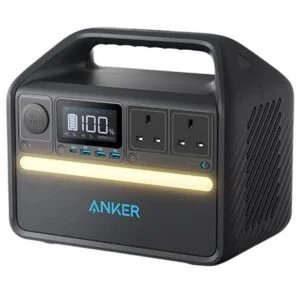Hi , hoping for someone to shed light on a topic regards the trend of battery bank AC supplies from the likes of Anker or Jackery
my concerns are these devices get their own classification such as double insulated , class b for their own function which is to be charged from the 230AC socket ... fine if their out put is ELV
however they have multiple 230VAC sockets on them allowing 1500W +
BS7671 sec 551 requires generating units (of electrochemical accumulators ) to feature an RCD on final circuits. 100% of these power banks do not have an RCD , favouring separated voltage and electronics ( not SELV ) , however this is over the 110AC limit BS7671 allows for ....
my question is how are these units able to meet regulations and gain CE marking and ultimately be safe
they are essentially able to pile 6 Amps at 230V with only overload to protect you which personally is a little more than the 30mA we are so dearly bound to
 Never used that exact make, but the comments below are general..
Never used that exact make, but the comments below are general..